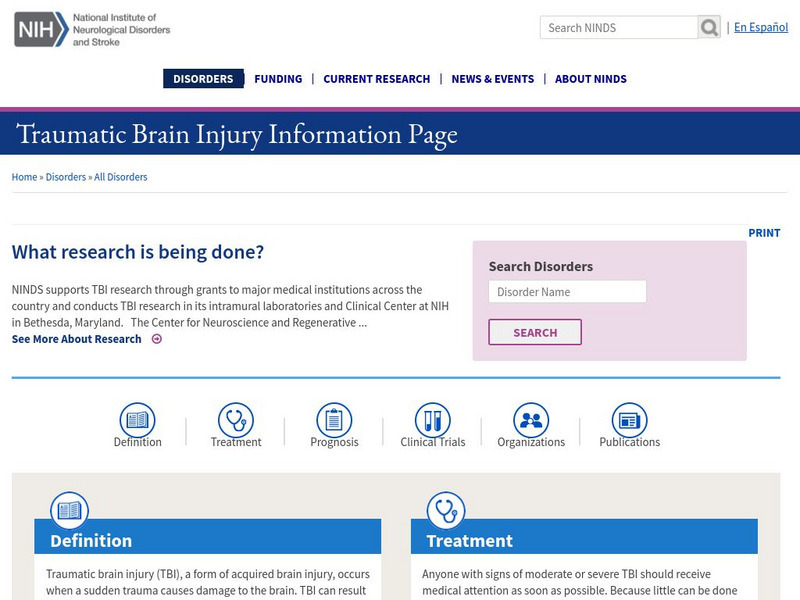Curated OER
Disorders of the Brain
Students, in groups, conduct research about a specific disorder of the brain, create a character study of a person with that brain disorder, and then present the information to the rest of the class.
OpenStax
Open Stax: Anatomy & Physiology: Overview of the Neurological Exam
Find out about the major sections of the neurological exam and the connection between location and function in the nervous system. Also learn the benefit of a rapid assessment for neurological function in a clinical setting.
Other
Parkinson's Disease Foundation, Inc.
This website offers information about the Parkinson's Disease Foundation, including disease treatments, research updates, support networks and recent articles.
National Institutes of Health
Ninds: Traumatic Brain Injury Information Page
Description of traumatic brain injury, which can lead to a coma. Discusses what TBI is, how it is treated, what the prognosis might look like, and research that is being done in the movie.
Curated OER
Kids Health: Bell's Palsy
Interesting discussion of Bell's Palsy, a condition of the nervous system that affects the face. Topics include what it is, the causes, the symptoms, the treatment, and how to live with it.
Curated OER
Kids Health: Parkinson's Disease
People with Parkinson's disease gradually lose the ability to control body movements. Here you can find the cause, the symptoms, the treatment, and how to live with this central nervous system disorder that primarily affects adults.
PBS
Pbs Teachers: Scientific American: Pieces of Mind: Remembering What Matters
Explore how the new technology of PET (positron emission tomography) imaging has given researchers a tool to look inside the brain. Investigate uses of this technology in brain research and list ideas for future uses of PET scans.







